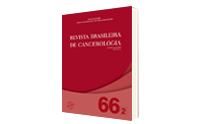Barriers to Cancer Prevention and Oncologic Treatment for Homeless People
DOI:
https://doi.org/10.32635/2176-9745.RBC.2020v66n2.816Keywords:
Homeless Persons, Neoplasms/prevention & control, Neoplasms/drug therapy, Health Services, Public PolicyAbstract
Introduction: Barriers to the universalization of the access to healthcare actions and services are intensified for historically neglected populational groups, such as homeless people. In oncology this scenario is not different, and studies are needed to help to reveal this reality. Objective: To understand the difficulty homeless people face to access cancer prevention actions and oncologic treatment. Method: Qualitative case report utilizing interviews with a team of street healthcare professionals in Rio de Janeiro. Data were analyzed following the hermeneutic dialectics framework. Results: The stigma historically attributed to homeless people makes difficult for them to access cancer prevention and treatment. Given the severe vulnerability condition of these people, cancer care has been presented as a secondary demand of their needs. Conclusion: It is essential to understand the health system as a building tool for citizenship and to add the theme of cancer to the daily practices of the healthcare street teams, considering the diversity of risk factors this group is exposed to and the necessity of overcoming the street life conditions.









